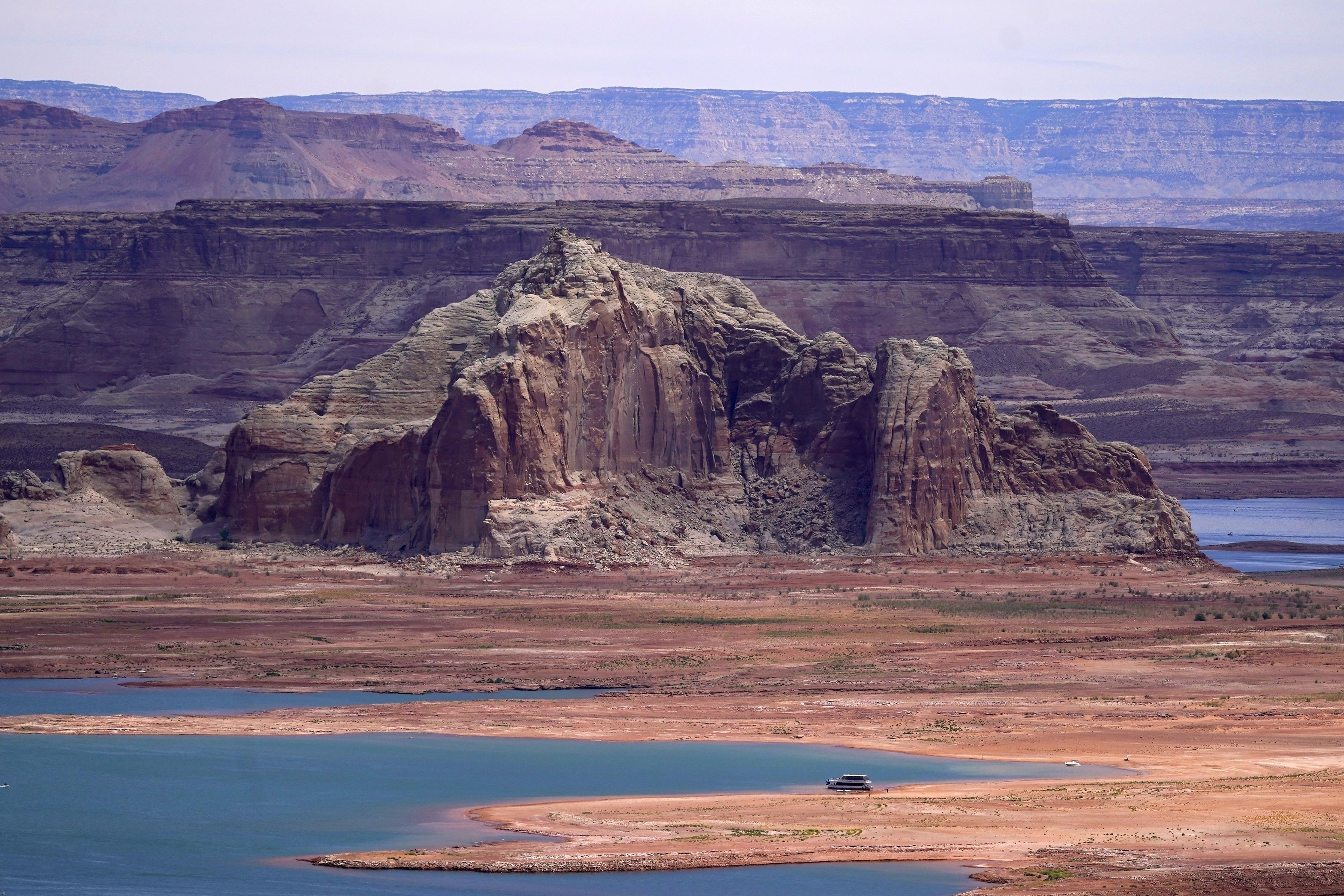 Low water levels at Wahweap Bay at Lake Powell along the Upper Colorado River Basin are shown, June 9, 2021, at the Utah and Arizona border at Wahweap, Arizona. (PHOTO/ FILE / AP)
Low water levels at Wahweap Bay at Lake Powell along the Upper Colorado River Basin are shown, June 9, 2021, at the Utah and Arizona border at Wahweap, Arizona. (PHOTO/ FILE / AP)
In recent years water levels on Lake Powell in Utah have fallen to historic lows, vineyards in northern California have been affected by wildfires, and more frequent and intense heavy rain events are obvious in the Northeast and Midwest.
In fact, all regions of the US are facing climate-related risks to their local economies, says a report published by the US National Climate Assessment on Tuesday.
Extreme events cost the US about $150 billion each year, a conservative estimate that does not include things such as loss of life, healthcare costs or damage to nature, the report says.
It is a congressionally mandated report that is produced every four years to analyze the effects of climate change on sectors and regions. The latest edition was developed by more than 750 experts and reviewed by 14 federal agencies.
The US is warming faster than the global average, increasing risks of potentially catastrophic outcomes such as increases in sea level, the report says
The US is warming faster than the global average, increasing risks of potentially catastrophic outcomes such as increases in sea level, the report says.
About 40 percent of US citizens live in coastal communities vulnerable to rising sea levels, it says, and millions of homeowners may be displaced by the end of the century.
READ MORE: US Supreme Court eyes allowing domestic-violence gun curbs
"Climate change is finally moving from an abstract future issue to a present, concrete, relevant issue," The Associated Press quoted the report's lead author, Katharine Hayhoe, chief scientist at the Nature Conservancy, based in Arlington, Virginia, and a professor at Texas Tech University, as saying. "It's happening right now."
When the last assessment was issued five years ago, fewer people were experiencing climate change firsthand.
'Not surprising'
"The news is not good, but it is also not surprising," said Waleed Abdalati of the University of Colorado, a former NASA chief scientist, who was not involved in preparing the new report. "What we are seeing is a manifestation of changes that were anticipated over the last few decades," the AP quoted him as saying.
Although the volume of US greenhouse gas emissions has fallen, the current rate of decline does not meet the necessary levels to fulfill national and international climate commitments and goals, the report says.
ALSO READ: US shilly-shally obstructing cease-fire
To meet current national mitigation targets and international temperature goals, aiming to prevent the climate from warming more than 1.5 C above preindustrial levels by mid-century, the report suggests that the US must achieve an average annual decline of more than 6 percent in net greenhouse gas emissions. Many countries are behind on their 2015 Paris Agreement pledges.


